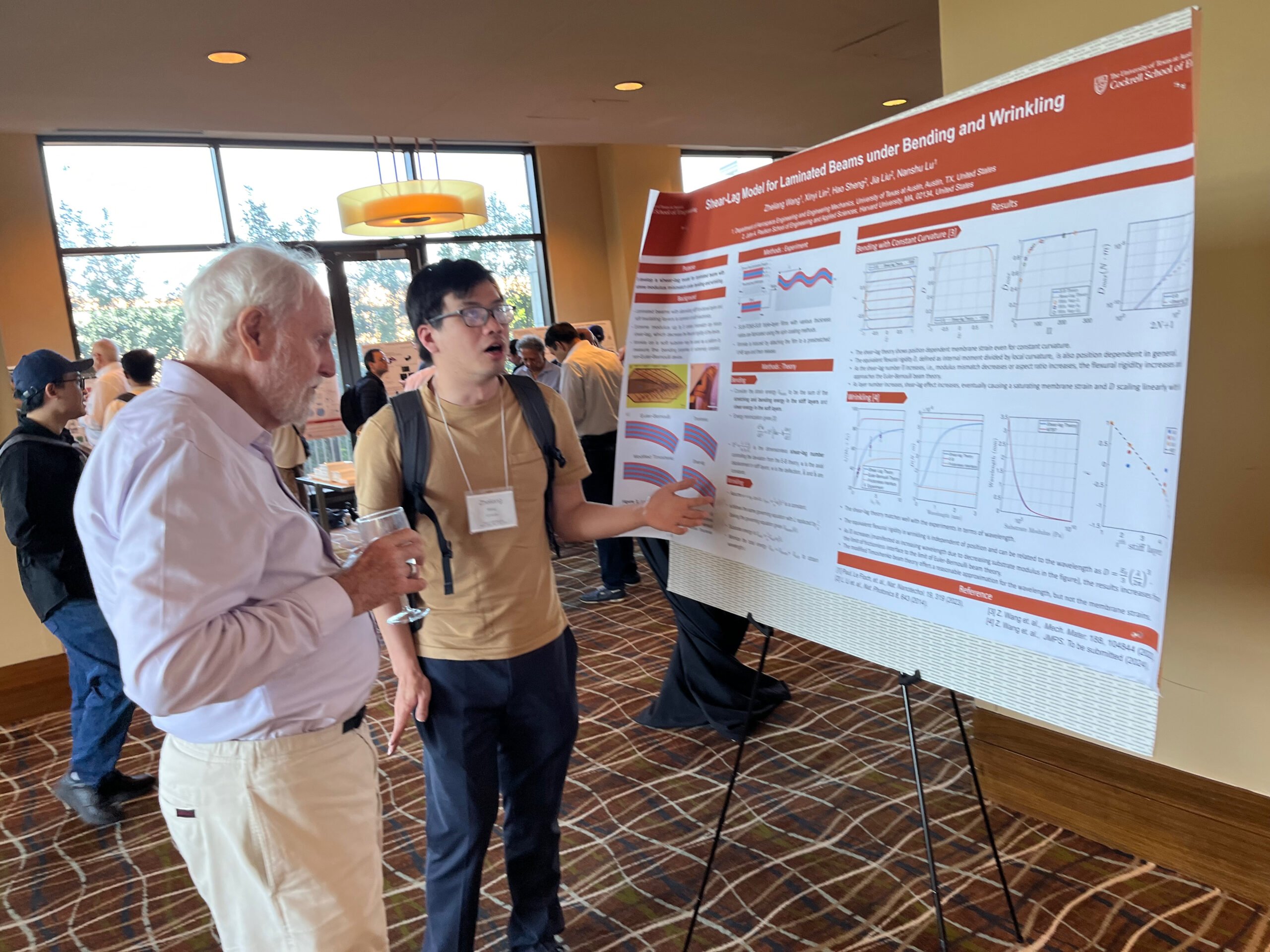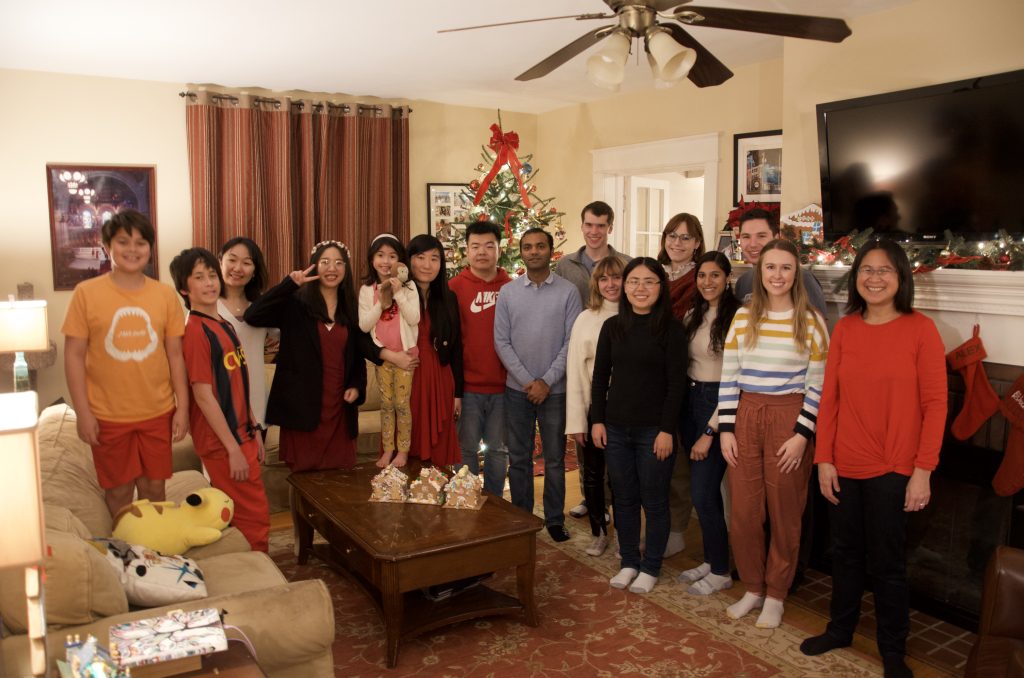





Viscoelastic Behavior and Energy Absorption of Main-chain Liquid Crystal Elastomers-Based Architected Materials
Beijun Shen
Energy absorption is essential in designing materials and structures for impact mitigation, vibration isolation, and energydissipation. Architected materials leveraging geometric instabilities, such as snap-through buckling, are effective at reversibly trapping energy but often lack strain rate sensitivity. Liquid crystal elastomers (LCEs), crosslinked polymer networks with stiff, rod-like mesogens, present a unique opportunity for integrating rate-dependent dissipation mechanisms. LCEs exhibit superior energy dissipation due to the coupling between viscoelastic network deformation and anisotropic mesogen reorientation, enabling properties such as soft elasticity and significant hysteresis.
This dissertation explores the synergy between the viscoelasticity and soft elasticity of LCEs and the energy-trapping mechanisms of instability-based architected materials to enhance energy absorption.
- The first part examined the combined effect of viscoelastic dissipation and snap-through buckling in a lattice structure under compressive loading. Finite element simulations employing a large-deformation viscoelastic constitutive model for the LCEs showed that energy absorption density increased with strain rate. For instance, at ~0.5/s, LCE-based structures absorbed four times more energy than their PDMS counterparts. Stacked LCEstructures exhibited nonuniform buckling, amplifying viscoelastic dissipation.
- The second part focused on the finite-strain viscoelastic behavior of monodomain LCEs under uniaxial tension.Experimental characterization and computational modeling of LCEs based on a nonlinear viscoelastic framework revealed distinct behaviors of LCEs with different crosslinking densities. The simulation results showed that the more crosslinked LCEs exhibited greater contributions from elastic strain energy and polymer network dissipation compared to their less crosslinked counterparts, though director dissipation remained the dominant energy absorption mechanism in both cases.
- The final part explored the soft elasticity of monodomain LCEs as an additional energy dissipation mechanism in diamond-patterned structures. Finite element simulations and experiments highlighted the interplay between the viscoelastic buckling of angled LCE beams and the stretching of transverse LCE films, demonstrating substantial improvements in energy absorption.
- This dissertation provides critical insights into the application of LCEs in advanced energy-absorbing lattice structures, offering new opportunities for designing impact mitigation and energy dissipation structures.
Great to catch up with Arina Korneva at SB3C. Arina is in her 2nd year as Assistant Prof at Virginia Tech.

It was great catching up with Zheliang Wang presenting at future faculty poster session at the symposium. Good luck Zheliang,

Kelly Clingo presented her research at ARVO, her first conference as a PhD student. She presented her new machine learning method for automated segmentation of the ON tissues.

Cameron did a great job. His thesis came together beautifully.
Characterizing the Remodeling of the Lamina Cribrosa of Glaucoma Eyes
Glaucoma is the leading cause of irreversible vision loss and affects roughly 80 million people worldwide.
Glaucoma is characterized by progressive visual field loss from the death of retinal ganglion cell axons in
the optic nerve head (ONH). The primary site of axonal dysfunction in glaucoma is the lamina cribrosa
(LC), the part of the eye wall in the ONH. The human LC is formed from cribriform plates composed of
elastin, collagen types I and III, and various proteoglycans. When viewed en face, the plates resemble a
beam and pore network that supports axons exiting the eye. A major risk factor of glaucoma is excessive
intraocular pressure (IOP). High IOP mechanically deforms the LC, and those deformations stretch,
compress, and shear axons. Over time, the LC remodels and the plate-like structure thins and becomes
more curved with progressive axonal damage. The collagen, elastin, and proteoglycan composition also
change, and the pores become smaller. These changes in microstructure and tissue composition may
influence the biomechanics of the LC. LC biomechanics have previously been measured using digital
volume correlation (DVC) both ex vivo and in vivo for short term IOP change. However, the LC
deformations from long term remodeling have not been studied. The strain and remodeling may be
biomarkers for a patient’s susceptibility to glaucoma damage or worsening of vision loss following medical
intervention. Therefore, the objective of this work was to characterize the long-term remodeling of
the lamina cribrosa of glaucoma eyes by measuring LC biomechanics and structure.
The first part of this work characterized remodeling of the LC of postmortem human donor eyes and
compare to the degree of axonal damage. The second study estimates the direct strain response to IOP
change in vivo in glaucoma patients and their relationship to clinical measurements of glaucoma damage.
The final study reimages the glaucoma subjects of the second study years later to estimate the remodeling
deformations in the LC following medical intervention.





















